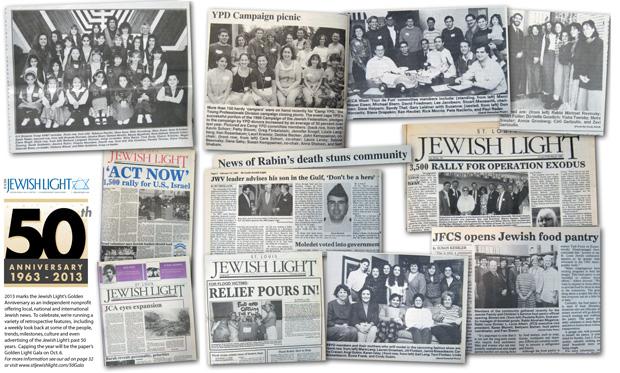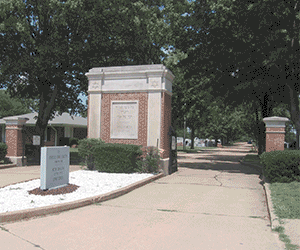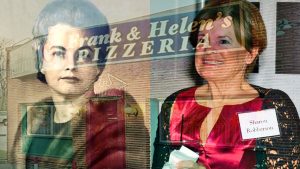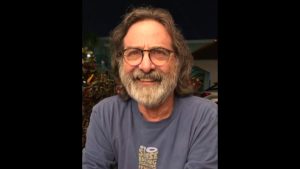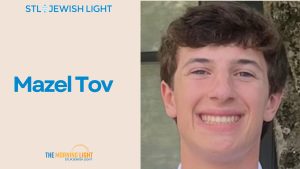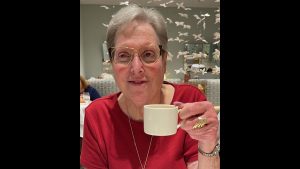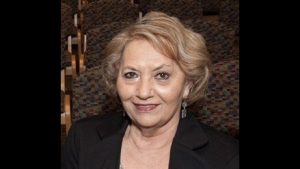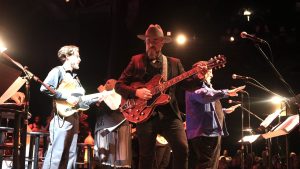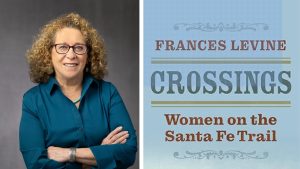Looking back: The St. Louis Jewish Light in the 1990s
Published September 4, 2013
While no single theme emerged to define the 1990s, it was hardly an era bereft of changes. As might be appropriate for a period marked by the rise of the Internet, the new realities, infrastructures and ideas that began to emerge throughout the decade were destined to affect the Jewish community both at home and abroad for years to come.
There was little question of the top issue early in the decade. The massive influx of Jewish immigrants from the rapidly dissolving Soviet Union was reaching a flood tide as was the number of stories on the topic gracing the pages of the Jewish Light. Social service agencies within the community were becoming overwhelmed; ironically, by the very thing so many Jews had prayed for.
“We are in the midst of a marvelous crisis,” said Dr. Rosalie Sterneck, chairman of the Jewish Federation of St. Louis Task Force on Resettlement in a January 1990 issue. “For years we asked the Soviets to ‘let our people go’ and they finally did. We now have the opportunity to make Jewish history.”
The Jewish Light reported that some 600 people were expected in the area by the end of the year. Total emigration from the Soviet Union to other nations had topped 71,000 in 1989, a new record. Locally, infrastructure was strained however and increased fundraising was a necessity. Another 1990 article chronicles the impressive progress of new Americans at Epstein Hebrew Academy but also notes the increased need for financial support. Only seven had been in the school in 1989. By the following year, that figure had increased by more than fivefold with each student costing about $4,500 to educate. Most of that money was being provided by the community rather then the arriving families who had their own fiscal challenges with which to contend.
“They need to concentrate on their homes, jobs and other necessities,” said Rabbi Joseph Rischall, educational director of the school. “We won’t turn anyone away.”
The arrivals were integrating into congregational life as well. At Bais Abraham, a September article noted the existence of Thursday night Jewish education classes conducted in Russian for 20 to 30 immigrants.
“In the USSR, we were persecuted for being Jewish, yet we come to America knowing little about the religion,” said Siberian Shmoel Morgenfeld, speaking through a translator. “Now at least, I know my grandchildren will be Jewish because they are learning so much. Where I came from, only the elderly people would sing Jewish songs. Today, my grandchildren want to speak Hebrew and sing the songs.”
With all the news of Soviet Jewish immigration, the Jewish Light would, by the end of 1991, have a chance to editorialize on the fall of the Soviet Union itself with a mixture of amazement, admiration and concern.
“After years of demanding that Soviet authorities ‘Let Our People Go,’ we must do all we can to ‘Let Our People In’,” it said.
Some national developments would have a trickle-down effect on local congregations. A July 1990 article noted the Reform movement’s approval of gays for rabbinic positions, a move that the Conservative movement distanced itself from and which drew disapproval among many Orthodox rabbis across the nation. In the St. Louis area, reaction was equally mixed.
Rabbi Eric J. Bram of Temple Israel called it a “courageous act by the Reform movement, which has been a leader in the struggle for human rights for everyone” while Rabbi Jeffrey Bienenfeld of Young Israel commented “I am both distressed and deeply saddened that any rabbinic organization, loyal to Judaism’s traditional norms and sensibilities, would elevate a religiously illicit lifestyle to a level of religious respectability by condoning homosexuality within the ranks of its membership.”
By 1993, other concerns were coming to the fore. A March issue lauded the arrest of Mohammed A. Salameh, one of the conspirators who attempted to bring down the World Trade Center that year with a bomb in a parking garage. In an editorial, the newspaper also echoed calls from the National Jewish Community Relations Advisory Council in urging tolerance.
“The NJCRAC has correctly called on law enforcement agencies to protect the rights and safety of Americans of Arab descent or Moslem faith and to prosecute those who may use these events as a rationale for acting criminally against Arab and Moslem Americans,” it opined.
Tragically, less than a decade later, jihadists would succeed in destroying their target in the most prominent terror attack in history.
Despite news of terror however, by September 1993, the Light’s cover would reflect new hope for an end to violence in announcing the long-awaited accords between Israel and the PLO. In a front-page article entitled “PEACE” editor-in-chief Bob Cohn reflected on having seen both the 1979 and 1993 documents signed.
“Israel and the Palestinians have shared the same passion for the same land since the days of ancient Israel and the Philistines, the people from whom the name Palestine is derived,” he wrote. “Gaza, the home to the ancient Philistines will soon come under limited Palestinian self-rule along with Jericho, the ancient Canaanite city whose walls had to be breached by Joshua’s trumpet and troops.”
But while a hopeful future dominated the headlines, the decade also invested considerable energy in reexamining and trying to learn from tragedies of the past. The 1990s certainly marked an increasing interest in the Holocaust both nationally and in St. Louis. The United States Holocaust Memorial Museum opened in 1993 and movies focusing on the Holocaust and Nazism made waves during the decade. The year 1993 saw the opening of perhaps the biggest Shoah film ever released, the Academy Award-winning “Schindler’s List.”
“It is indeed fortunate that Spielberg waited until he was good and ready to confront his own Jewishness in a powerfully positive way within his craft…” wrote a review of the film in December 1993. “In “Schindler’s List,” Spielberg proves that he has finally outgrown comic books and cartoons.”
The controversial Italian comedy-drama “Life is Beautiful” emerged in 1997 followed by “Apt Pupil,” and “American History X” the following year. “Jakob the Liar” came out in 1999.
“Both of these films deserve to be described as ‘well-made,’” wrote Bob Cohn in an article that addressed “Life” and “Pupil,” “but it has been asked whether it trivializes or demeans the massive tragedy of the Holocaust by using it as a backdrop for ‘Life is Beautiful’ which starts out as an almost slapstick comedy, or ‘Apt Pupil,’ which uses the real horror of the Holocaust to squeeze commercial fear out of yet another Steven King film audience.”
The piece even questions contemporary memes of the time like the popular TV show Seinfeld’s “Soup Nazi” as examples of making the Shoah into comedy.
In the end, however, Cohn was won over by the performances in “Life is Beautiful” and found “Apt Pupil” a worthwhile experience.
“But the film left me exhausted and feeling more than a little guilty over ‘enjoying’ such a disturbing experience,” he concluded.
The Shoah was also on the minds of Jews locally as well with the opening of the local Holocaust Museum and Learning Center in Memory of Gloria M. Goldstein.
“The recent genocidal ethnic carnage in places like Bosnia or Rwanda underscore the importance of teaching the lessons of the Holocaust or Shoah,” read an editorial in an April 1995 commemorative edition of the Light, which included reaction and a timeline of the 20-year-long planning process.
“My whole family is gone,” said Leo Wolf, a survivor who was the main driving force behind the project, “and there is a reason why I alone survived. This is my mission…”
Sadly, the year closed on a note of horror as Israelis lost a Prime Minister to an assassin’s bullet fired not by a jihadist but by a fellow Jew. Yigal Amir, a religious student, was later convicted of killing Yitzhak Rabin.
The Jewish Light chronicled the tragedy in an emotional front-page story that evoked memories of the Kennedy assassination.
“Who but Yitzhak Rabin could have moved Kissinger to tears at the news of his death?” wrote the paper. “Who but Yitzhak Rabin could have gathered the leaders of the world to Mount Herzl, the burial place of Theodor Herzl, the founder of modern Zionism? Who but Yitzhak Rabin could be compared to George Washington of our country of whom it was said: He was first in war, first in peace and first in the hearts of his countrymen?”
Meanwhile, the new Holocaust Museum wasn’t the only change in the offing for local facilities and institutions. The year 1996 opened with the announcement of a controversial merger between Barnes and Jewish hospitals. The joining met with mixed reviews.
“Faced with a rapidly changing pattern of health care services and a projected decline in federal assistance, the leadership of Jewish and Barnes hospitals, after exhaustive study and discussions, concluded that they could best fulfill their historic mission as a merged hospital,” wrote the Light in a January editorial.
The previous year, Rabbi Mark L. Shook opined on the impending joining, saying that he hoped the new merged institution would engage in “frank discussions” with the St. Louis Rabbinical Association over questions ensuring adequate rabbinic staffing.
“Despite all of the rational arguments to the contrary, I will never feel the same visiting a patient at Missouri Baptist as I do at Jewish Hospital,” he wrote. “There is a sense of ownership that no merger can deny. The very least we can do for our community is to ensure that a Jewish patient will be received with respect and kindness throughout the BJC system.”
The year 1998 began with less controversial news, as the JCC’s Marilyn Fox Building opened its doors. The Chesterfield site was evidence of the continuing westward migration of Jews in St. Louis County.
“It is really hard to believe this day is finally here,” said the building’s namesake upon the unveiling of the 70,000-square foot facility attended by numerous dignitaries.
Meanwhile, Aish HaTorah was developing its own westward presence, beginning work late in the year on its new Firehouse facility on Woods Mill Road, which aimed to complement its digs on Delmar.
“Aish HaTorah literally means ‘fire of the Torah,’” said Rabbi Elazar Grunberger, executive director, “making the acquisition of the Firehouse wonderfully appropriate.
There were other signs of expansion in the community as well. The very next issue revealed a study that would examine the feasibility of a Reform day school in St. Louis, a project that would come to fruition the next decade.
National affairs also made the pages of the Jewish Light in 1998, including the issue most on everyone’s mind, the Lewinsky scandal.
Drawing parallels to King David’s sins, Bob Cohn opined in August piece entitled “Mr. President: It’s Time” that the Bill Clinton should come clean.
“In the interests of respecting the office you hold, the feelings of your own family and, in Harry Truman’s words, which you often quote, because it is the right thing to do: tell the truth, and end your personal nightmare and that of the citizens you were elected to lead,” he wrote.
Clinton would eventually do just that and survive his later impeachment.



